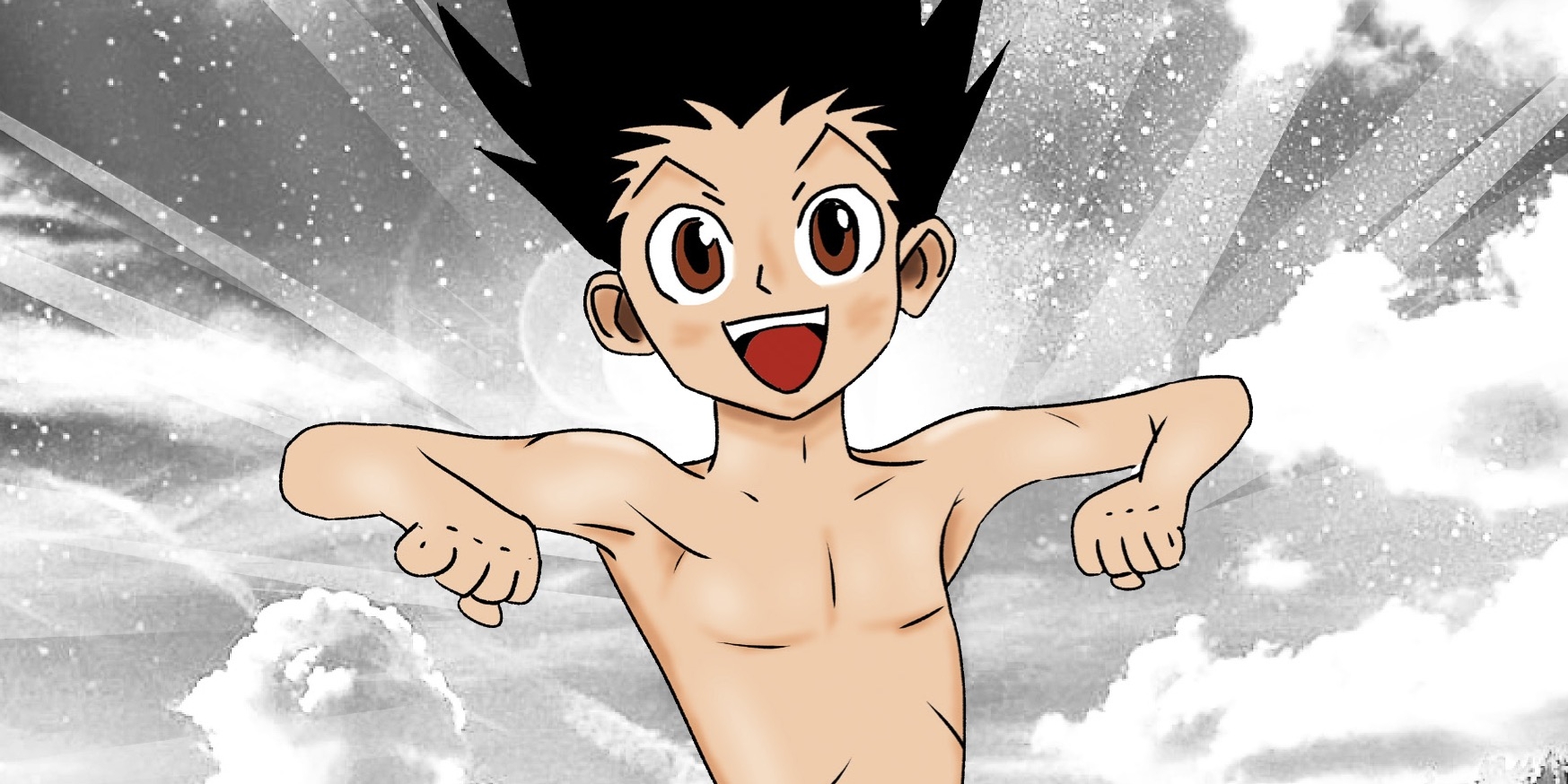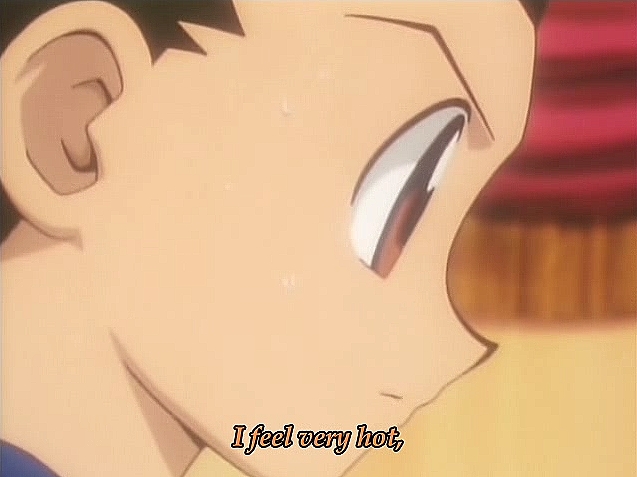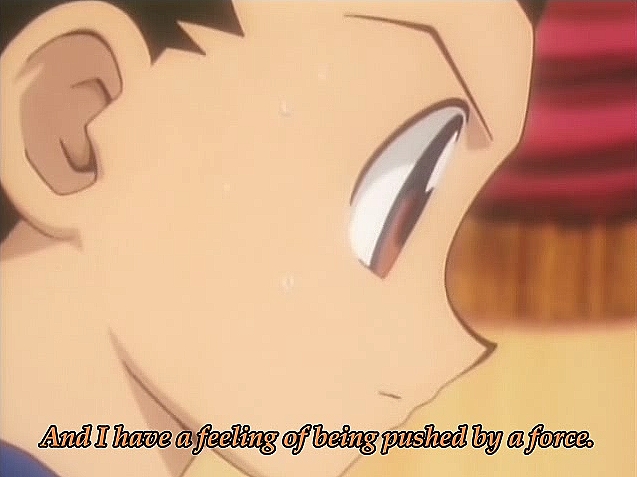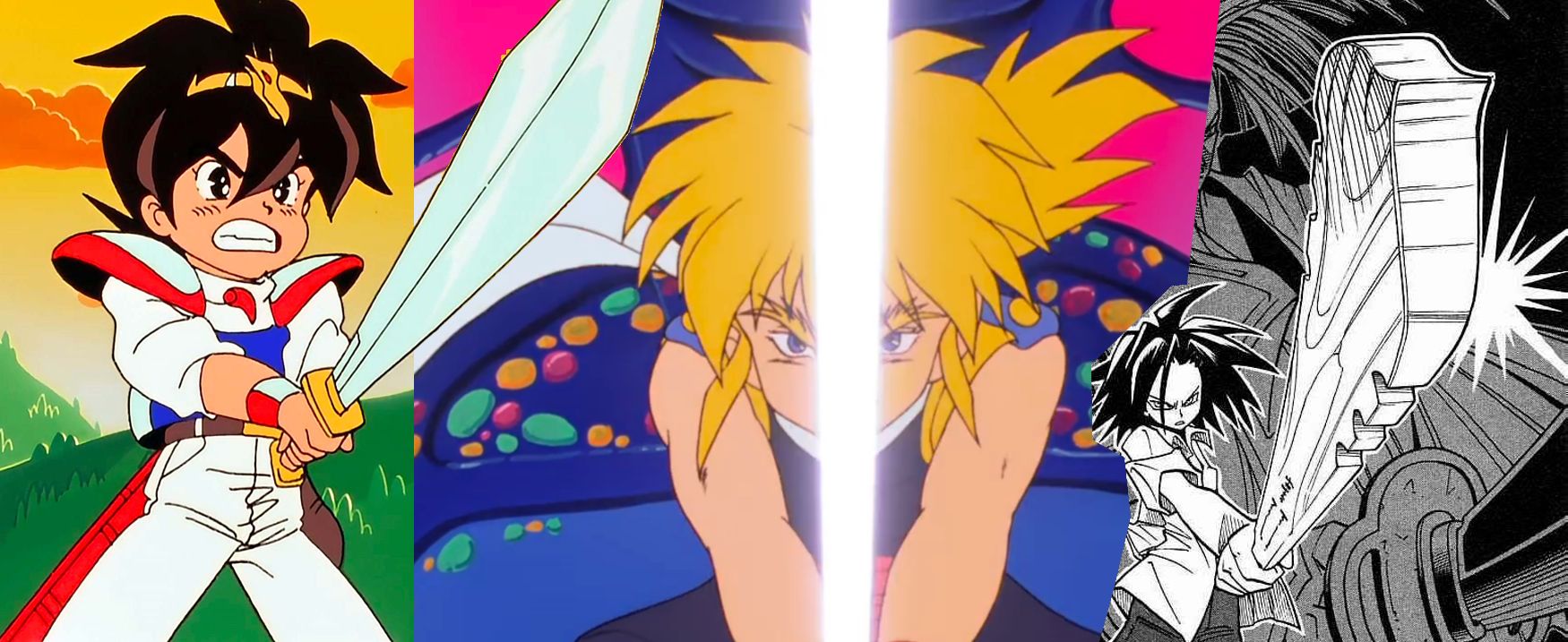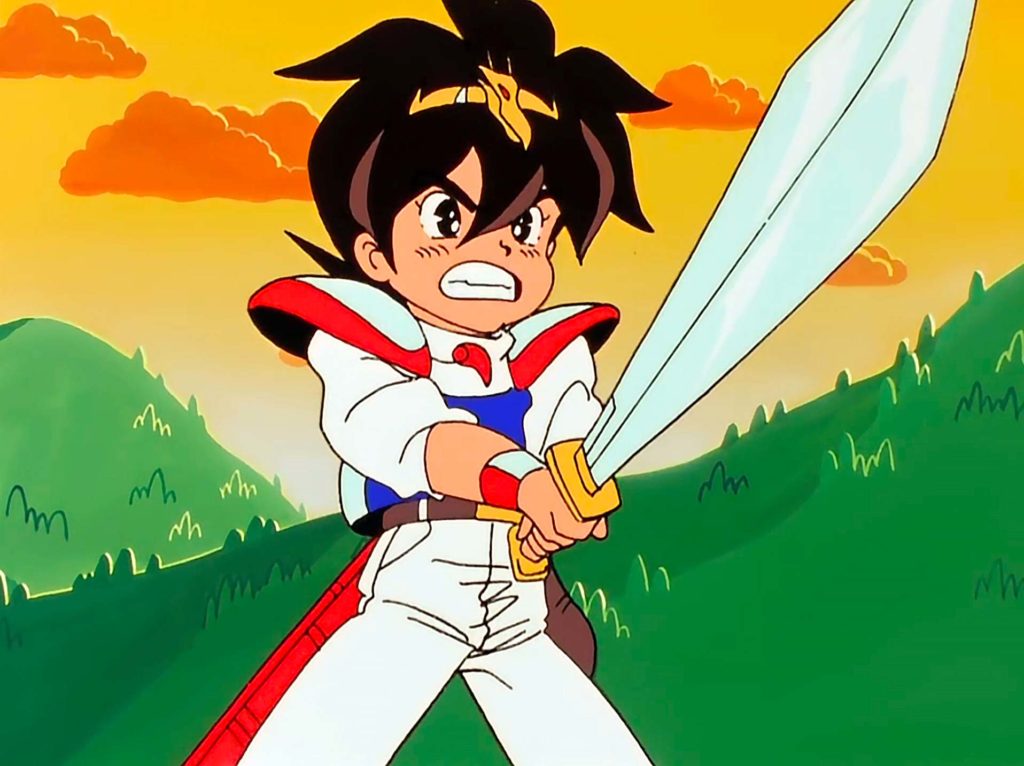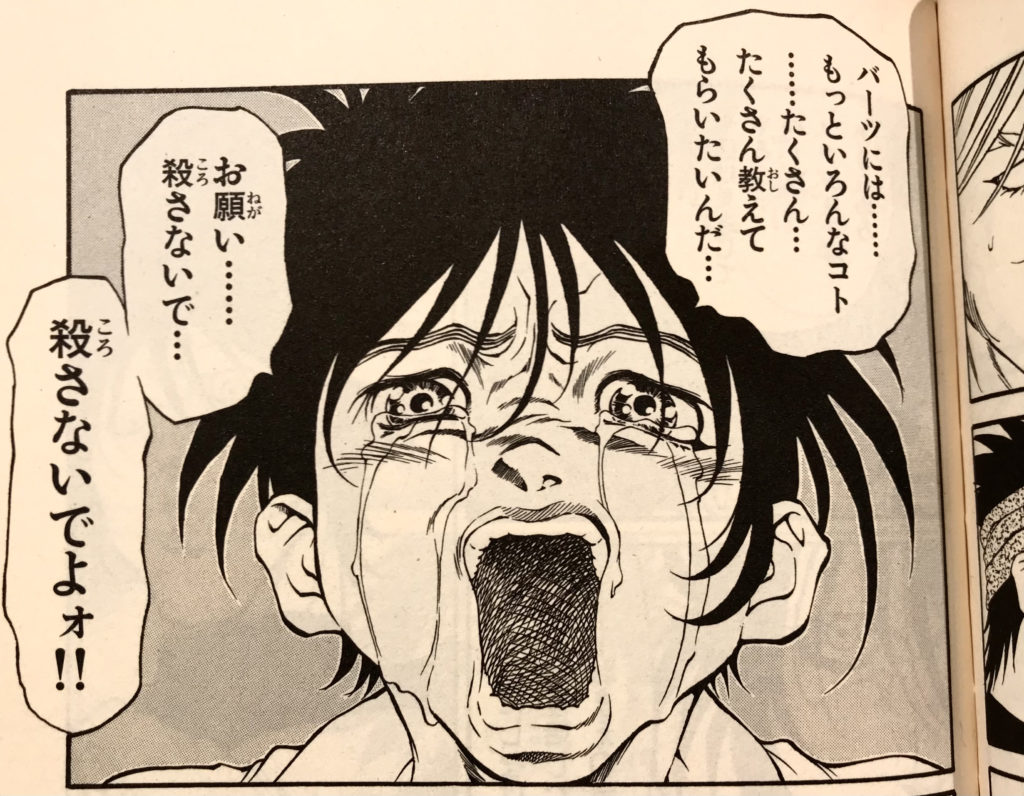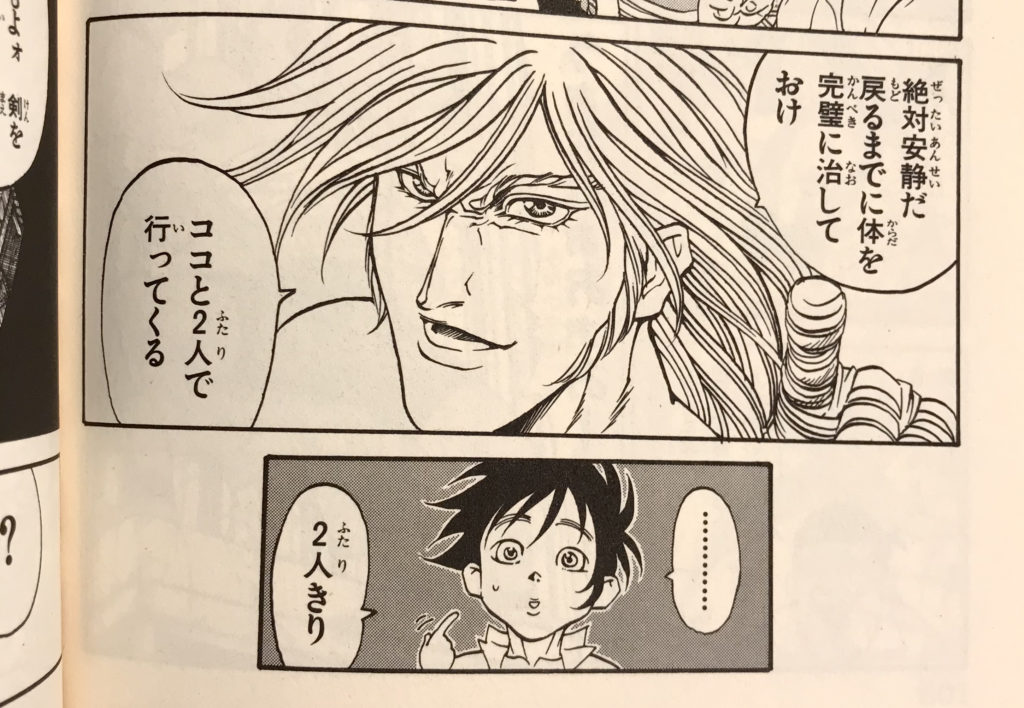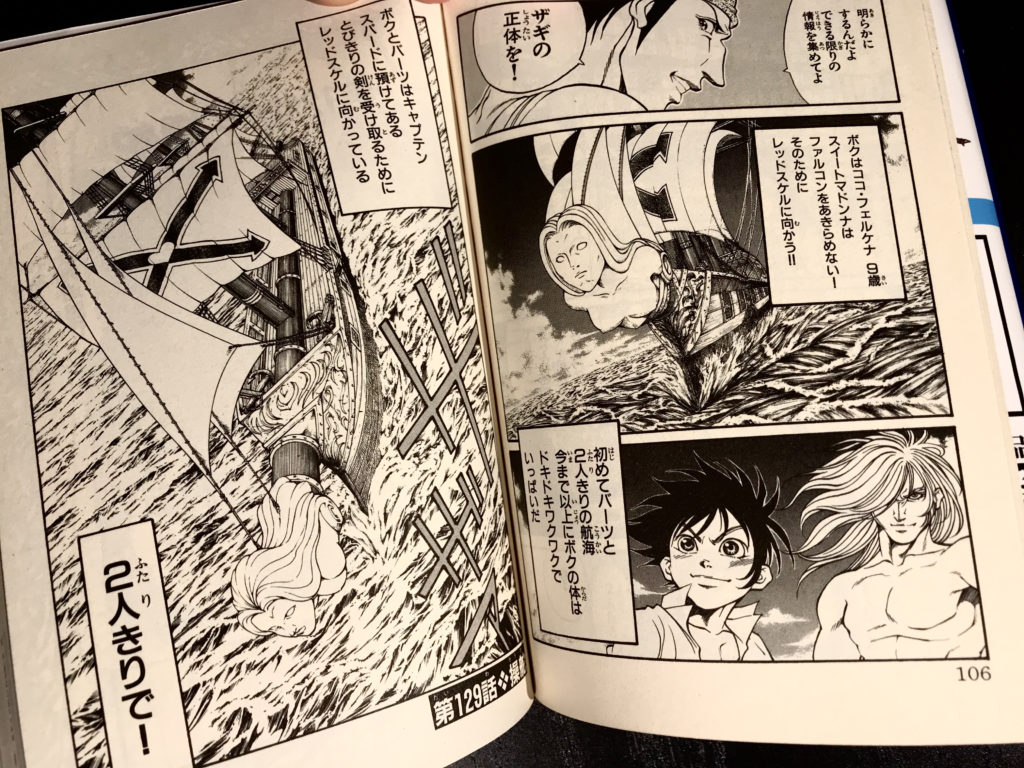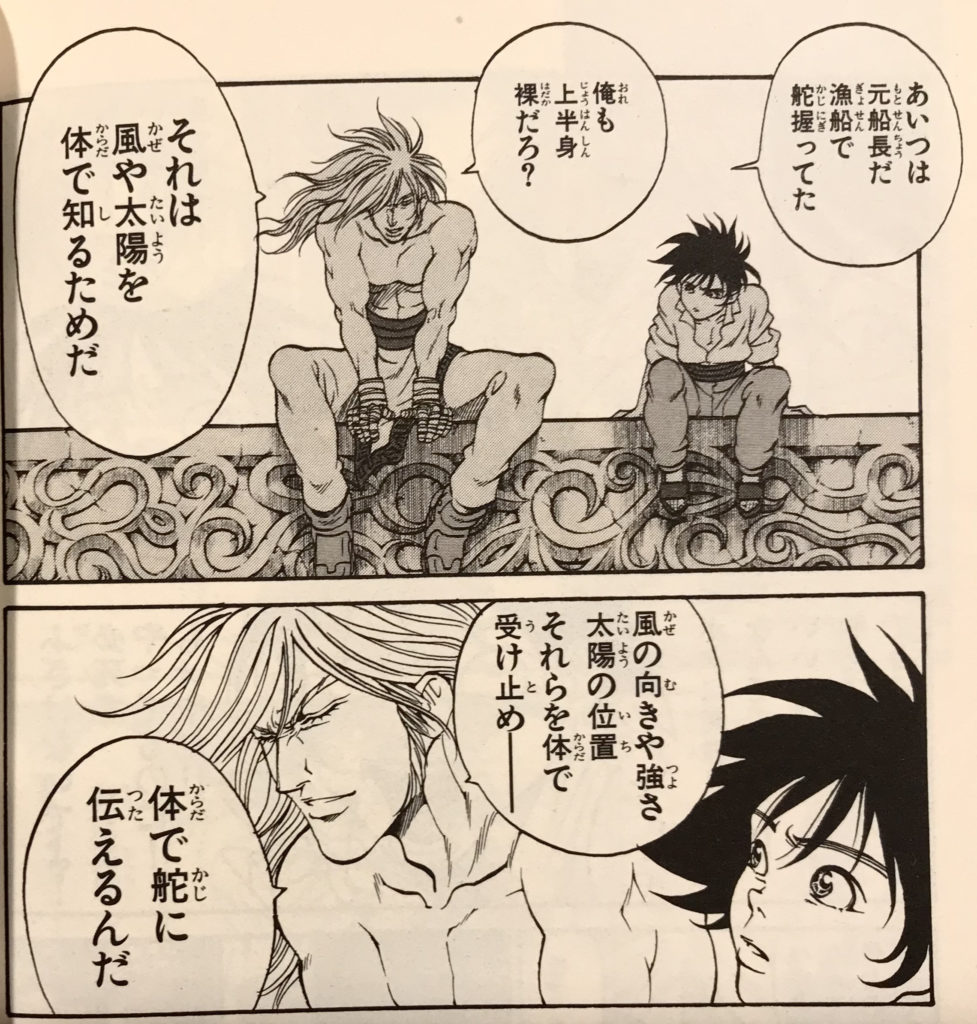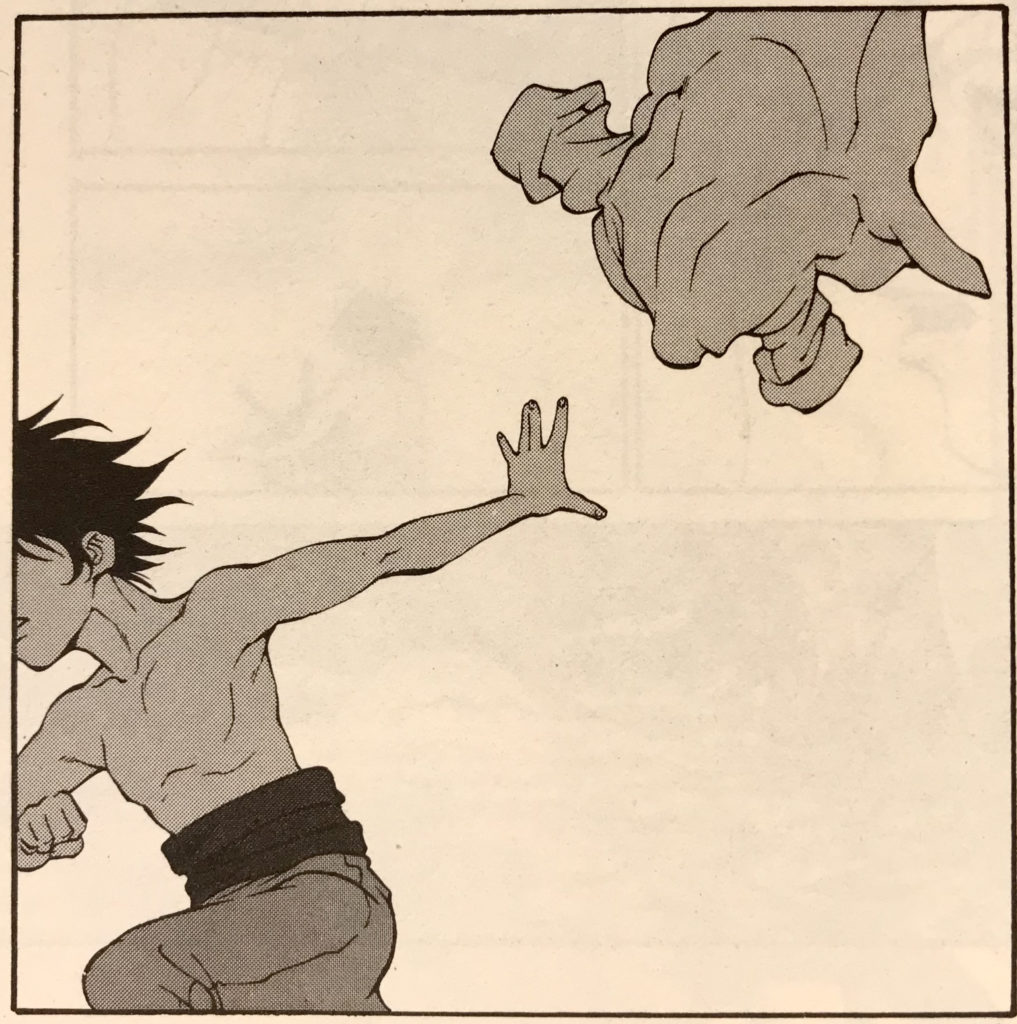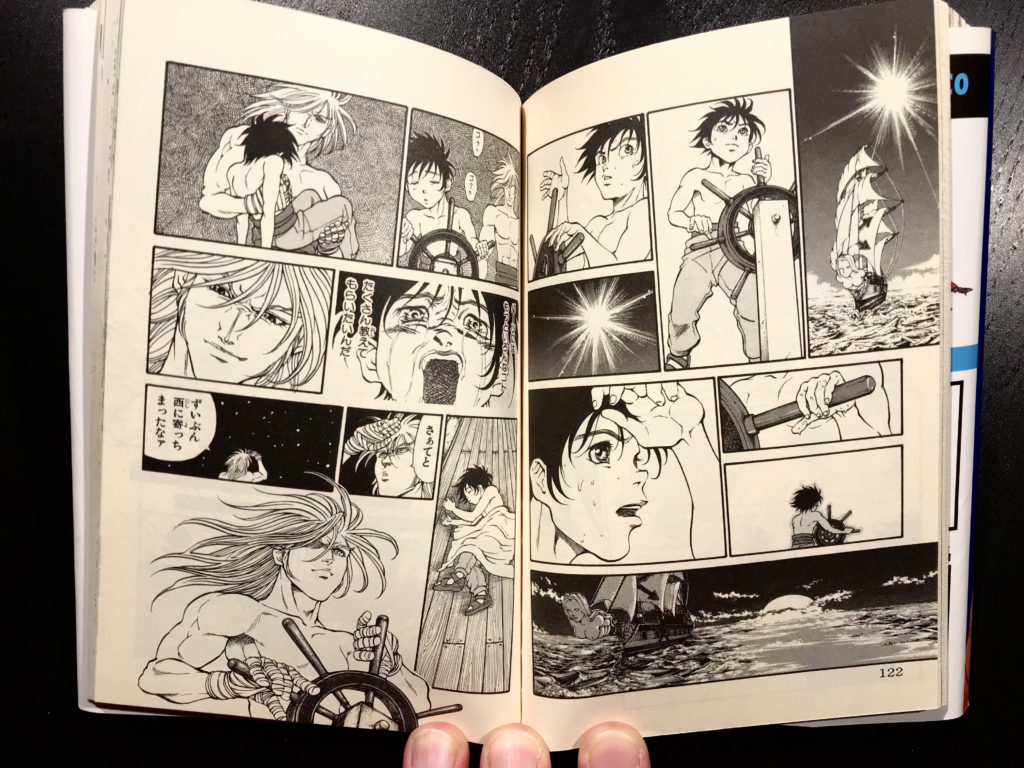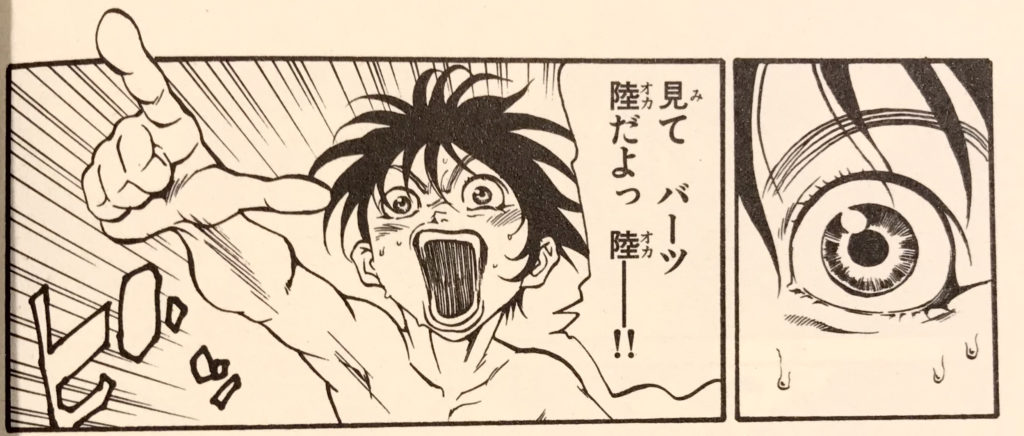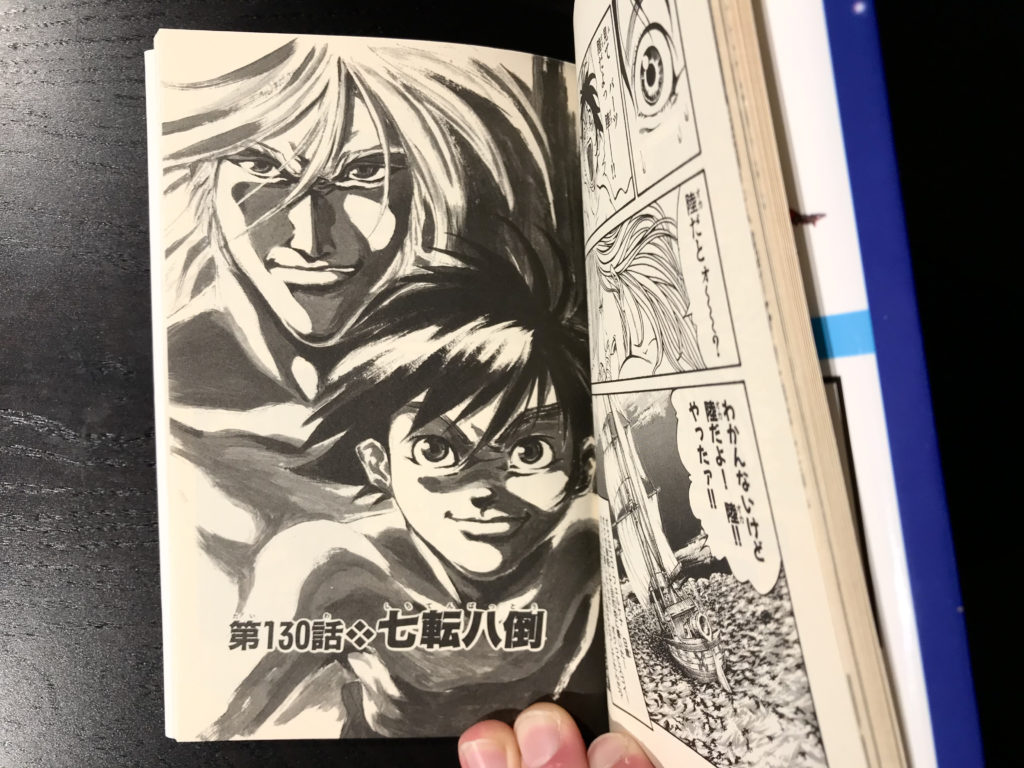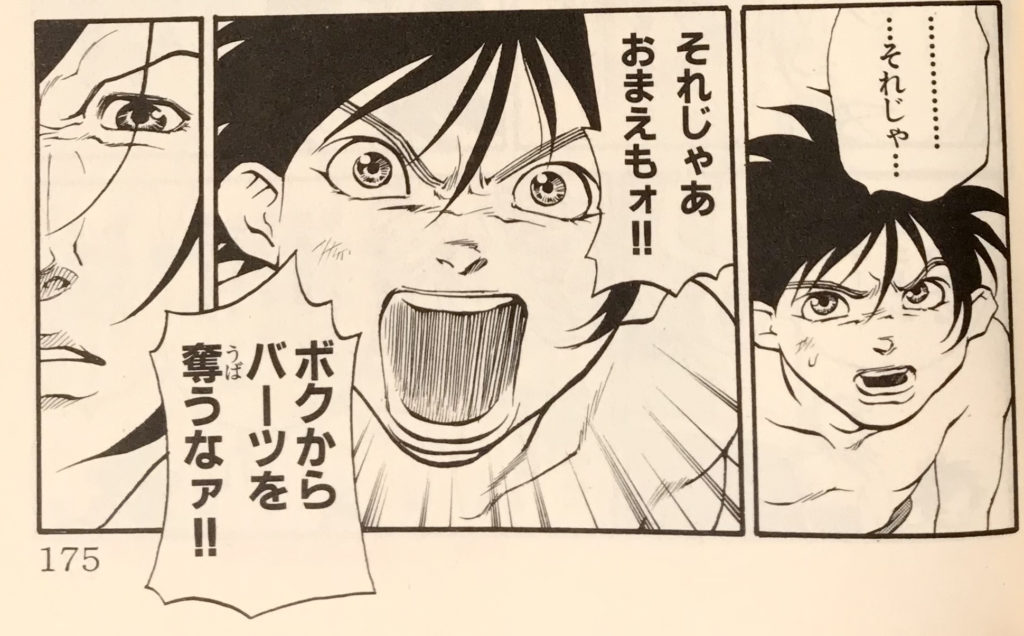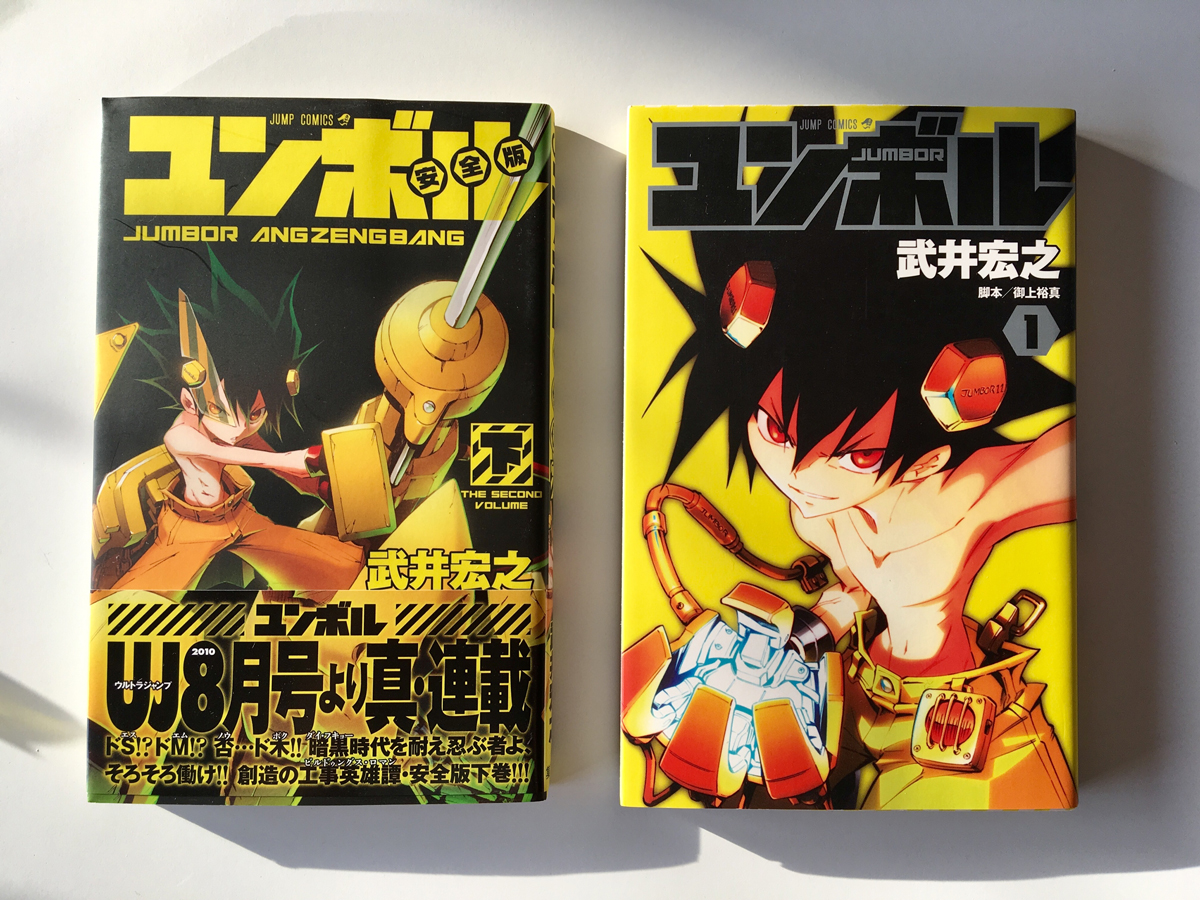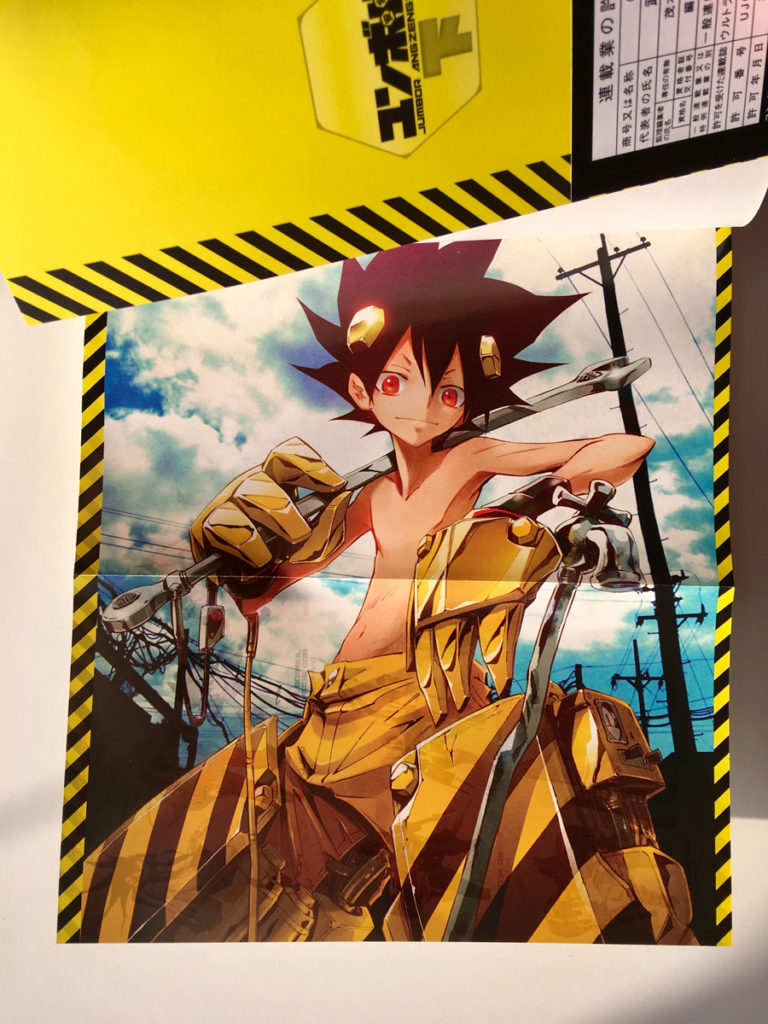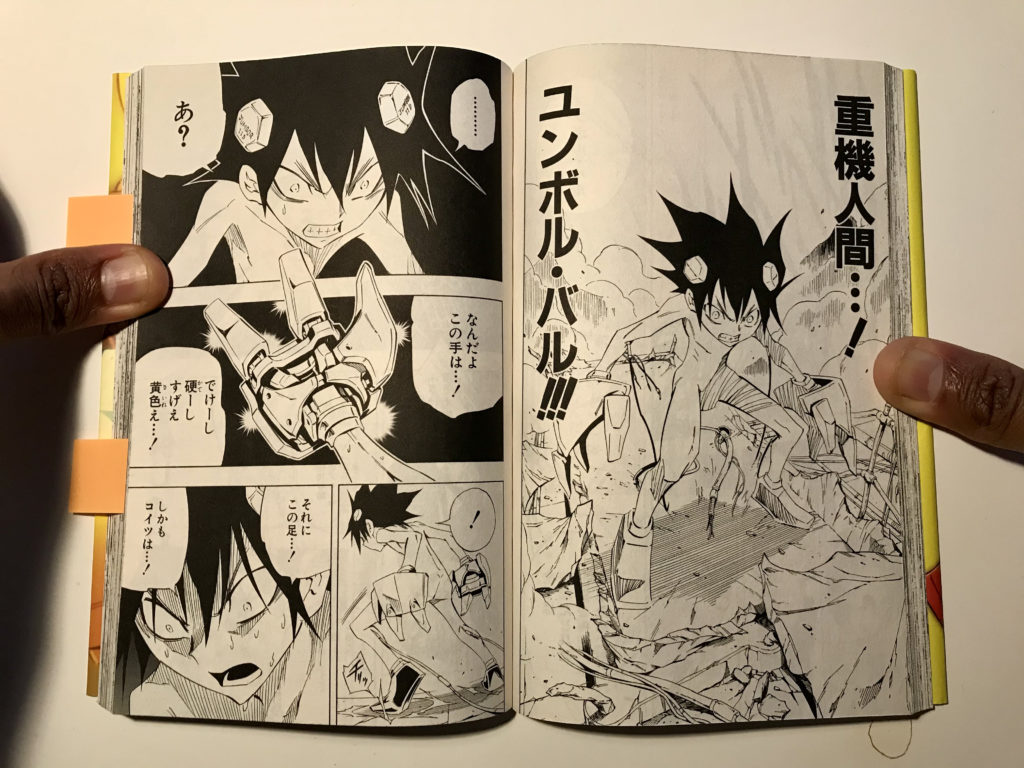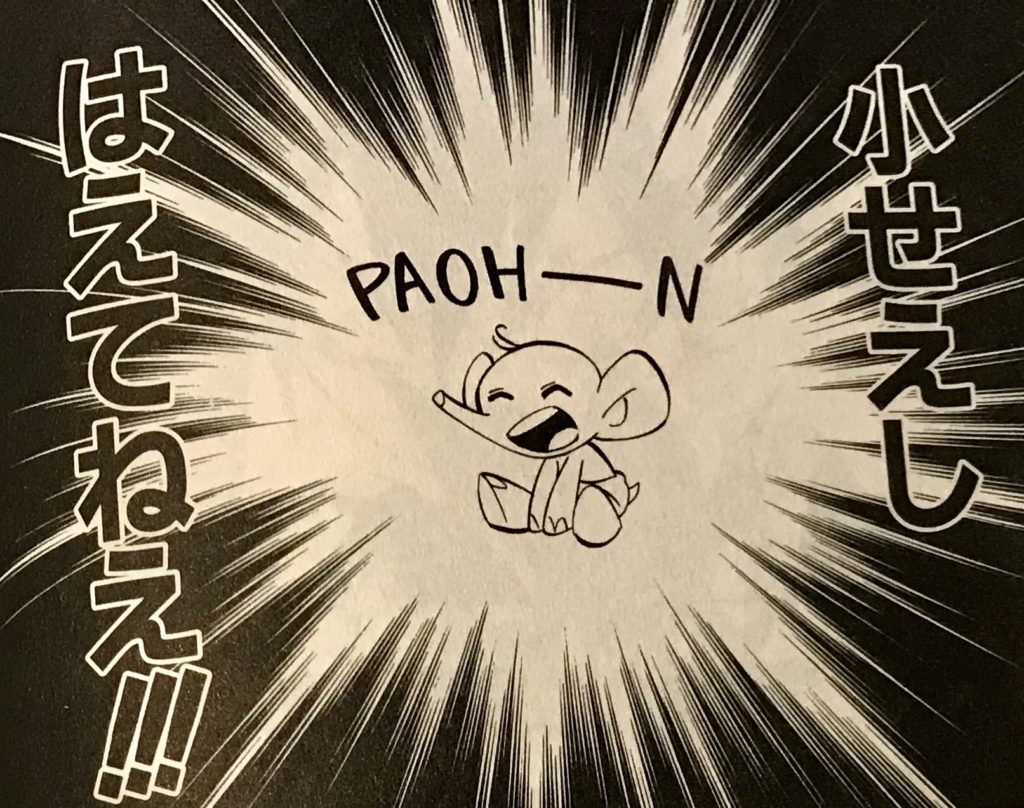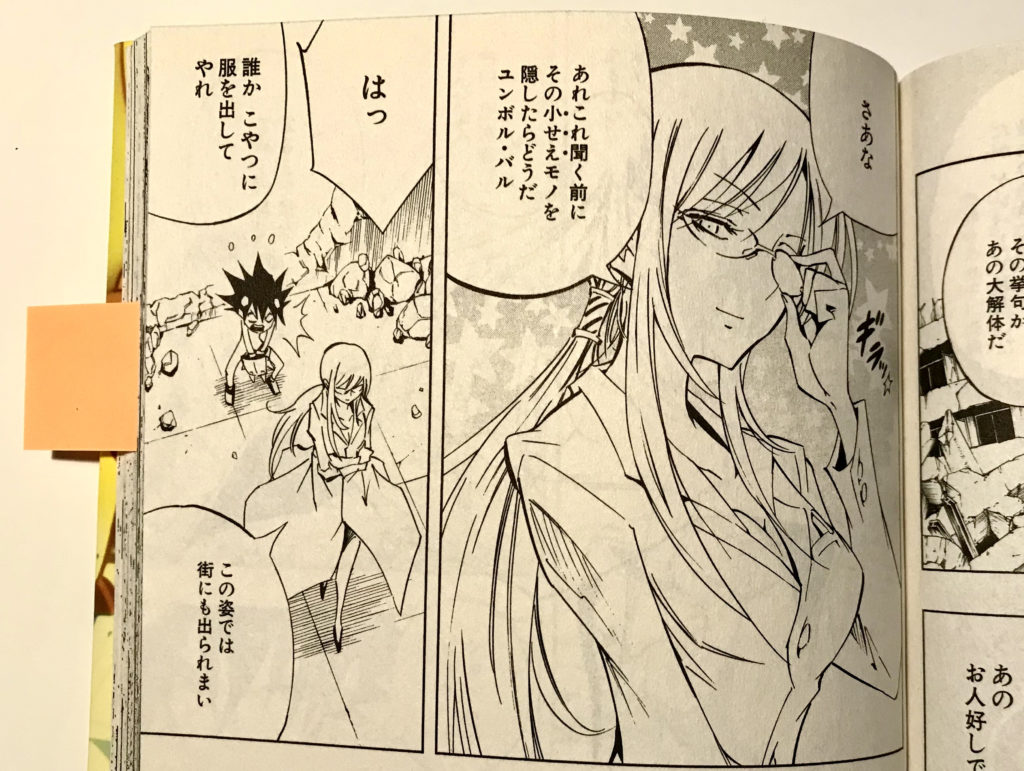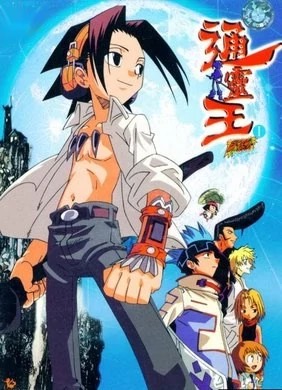The sexual references are bouncing off the pages as Japan’s favourite manga character Gon has his shōkō popped by a man.
Hunter × Hunter is the ultimate adventure comic. It was created by Togashi Yoshihiro in 1998, and made into an anime twice: In 1999 and 2011. The series is one of Japan’s most popular mainstream manga and anime. With 148 episodes of the 2011 anime so far, the adventure is still ongoing in the manga. Here we will take a closer look at episodes 39 – 44 of the anime from 1999.
The ultimate boy
The protagonist of Hunter × Hunter is Gon Freecss, a good-hearted and high-spirited 12 year old, who in many ways is the ultimate boy – not only because twelve is the perfect age for a shota boy. Gon is on a quest to find his father, who abandoned his family to become a “hunter”, a title and status given only to those who pass certain tests. So Gon sets out to become a hunter himself, figuring an occupation that leads a father to abandon his family must be truly awesome, or else his father wouldn’t have left them.
That’s the backdrop to what eventually leads up to a classic – in the word’s most literal sense – coming-of-age story. This arc plays out in the Celestial Tower, a huge phallic building with hundreds of floors – each one a battleground to conquer in order to reach the top. People spend months and years in the tower, which can be seen not only as a symbol of puberty – the transition from boy to man – but for life in general; each floor, each year is a struggle – a fun struggle.
Gon approaches the tower together with his friend Killua. (The friendship between the two boys is beautiful and full of symbolic hints; much has been written on Gon and Killua being “more than friends”.) They befriend a younger boy, Zushi, and his coach Wing. In order to win matches, the fighters must master nen, a kind of energy which resides inside every human being, but which must be awoken before it can be put to use. If a fighter enters the ring without knowledge of this technique, they are quickly “initiated” by their nen-using opponent, but since it’s a fight, there is malicious intent in this kind of sudden initiation, and it can result in damage or death. Wing is therefore teaching nen to Zushi, so that his protegé can learn to master it in a controlled way before entering the ring.
Wing immediately senses Gon’s and Killua’s natural proclivity for nen, and takes it upon himself to teach the boys how to master it. He has a hard time hiding his excitement about his new pupils to Zushi, whose progress with nen is slow – maybe because he is still too small, whereas Gon and Killua are at the exact right age where this initiation can and should occur in boys.
Sexual innuendo
Technically, nen (念 ≈ “mind force”) is a way for its users to control their own aura. Every person has an energy flow emancipating from their body, and mastering this energy field is key to winning the matches in Heaven’s Arena – the top floor of the Celestial Tower – and to mastering life as a hunter in general.
Symbolically, however, nen is akin to another three letter word with “e” in the middle: Sex. To understand this, we need to take a brief historical look at male coming-of-age rites:
When a boy of the Dorian people of ancient Greece was coming of age, he was given over to the care of a male friend of the family, who over a period of three months would teach the boy everything he needed to know in order to become a man. Learning to hunt was one of the most important parts of this initiation; the theme (and title) of Hunter × Hunter thereby focuses on a fundamental aspect of a boy becoming a man. But another important part of the initiation was the symbolical and literal insertion of manhood into the boy through anal sex; the man had to “inject” the boy with his semen, where the source of manhood was believed to reside, as described by Michel Foucault in the second volume of The History of Sexuality (1985). This practice is echoed almost to the letter by the contemporary tribes described by the anthropologist Gilbert Herdt in Ritualized Homosexuality in Melanesia (1984). It seems that sex between men and boys has been an intuitive feature of male coming-of-age rites in cultures otherwise diverse, and maybe it still lurks in our subconscious?
Popping the tight shōkō
Wing’s initiation of Gon and Killua begins in episode 39 in the 1999 anime. Nen is usually taught for a longer period of time, but since Gon and Killua are rushing to their next match, where they will need nen, Wing decides to transfer his nen, or ki (気 ≈ “energy”), to the boys in a more direct way – by opening their shōkō (精孔). We need not dwell on the exact meaning of this concept, as it is pretty abstract; shōkō basically function as the “nodes” for a person’s “aura”.
“Take off your coats and turn your back towards me”, he instructs the boys, and advises them to focus on their “tightly closed shōkō”.

He goes on in a way that would make the late Kenneth Dover (author of Greek Homosexuality, 1978) blush:
“I will now pass on my ki into your body in one shot, and open your shōkō.”

Cut to the boys’ nervous and excited faces, as Wing says from behind their backs: “I’m going to begin.”

How does a boy feel when the man transfers his manhood to him? What did a boy in ancient Greece think? Were they afraid? Proud? Excited? Gon is thinking this:
“I feel very hot, and I have a feeling of being pushed by a force.”
Then suddenly, the boys’ eyes wide open, their mouths gasping in shock and amazement.

It has happened – the man has transfered his energy – a part of himself – into the boys.
“Now your shōkō have been opened”, Wing concludes.
In the next episode, he reflects: “I may have awoken uncontrollable beasts.”
Comparing loads
Nen consists of many sub-concepts such as gyō, hatsu, ren, so for the next month the boys are busy learning all of them from their sensei. In episode 41, it has become time for the boys to get to know their newly awoken nen more intimately. There are different types of nen (or more specifically hatsu, 発), but you can’t choose for yourself which type you are – your type is as static as your DNA throughout life, a bit like how we think about sexual orientations, or blood types. A test with water and a leaf in a glass reveals which type you are.
Wing shows the boys how it is done:
“Hold your hands close to the cup and release your ren.”

In Wing’s case, the water starts overflowing the cup, which means he belongs to the “reinforcement” type of hatsu. Then it’s the boys’ turn. Gon’s aura too causes the water to overflow the cup – he too is a reinforcer. For little Zushi, the leaf starts moving – it means he’s a “manipulator”. But for Killua, nothing happens, and he is disappointed at first. But Wing instructs him to taste the content of the cup into which he has released his ren. Gon and Killua stick their fingers into the liquid and moves them to their mouths, taking a lick:
“It’s a little sweet.”

The water changing taste means Killua belongs to the “transformation” group.
The whole scene brings to mind the cup-bearers of ancient cultures, the sweet or overflowing liquid of course being a symbol of the boys’ own unique liquid DNA: Sperm. One of the personality types revealed by the water test is even called “emitter” (hōshutsu, 放出). The excellent Fandom page on Nen explains:
An affinity for Emission (放出系, Hōshutsu-kei; abbrev. as 放) means that a user has an easier time separating their aura from their body.
A person’s aura is a person’s soul, an abstract concept that in our scientific times can be said to reside in a person’s DNA, which is literally emitted through ejaculation.
Gay Hisoka
The main reason why Gon wants to master nen is because he wants to fight Hisoka, a flamboyant Pierrot and fellow hunter candidate. Hisoka’s interest in Gon has been expressed very explicitly throughout the series. He talks about wanting the fruit to ripe before he picks it. He is obviously the “gay” character of the series, but not in a negative way – Hisoka is portrayed as the most powerful (and dangerous) of the hunter candidates. Since Gon too is a wunderkind of sorts, this binds them together. Hisoka is very smart and relies on advanced magic in his fights. Gon, on the other hand, is a bit dumb but has an extremely good smelling sense; his intelligence works on a more intuitive level. Hisoka, who belongs to the transformation group, concludes: “Opposites attract.”

After the water test, Gon seeks out Wing again to show him “his results so far”. The water overflows again and Wing expresses his admiration for the boy’s development. Yet he knows, or fears, why the boy really came to him, and the ensuing dialogue has a subtle intensity that we are used to from heterosexual love dramas:
“You want to fight Hisoka”, Wing says with his back turned towards Gon. “Am I right?”
Gon confirms, and Wing turns around to face him:
“I’m only a person who teaches you nen. I don’t have the right to decide how you should live. I agree to your fight with Hisoka.”
And so, the boy is free to leave the man who introduced him to nen, and go out in the world to practice it in his own life, with the people he choose.
Overt man/boy eroticism
Let the game begin: Gon vs Hisoka.
“Both participants have looked forward to this match. Does that mean there is a special connection between them?” the female commentator says in the microphone as the match is about to start.
Hisoka is thinking: “Don’t look at me like that. The eyes you use to look at me are full of passion.” As he is thinking this, his arm straightens out on its own. “This makes me excited”, Hisoka says to himself as his straight arm starts pointing upwards despite he tries to keep it down with his other hand. “Even more excited!” he exclaims as the arm reaches full erection – the allusion to an erect penis is obvious and humorous.
Killua in the audience thinks to himself as they start fighting, with the vastly superior Hisoka scoring the first point without even moving: “Hisoka looks like he’s in ecstasy. But Gon looks like he’s having fun too, even though he has been punched hard.”
“I finally hit Hisoka”, Gon happily remarks as he scores his first point; Hisoka turns his bruised face towards the boy and smiles.
Gon gets a facial
As the real fight between the two begins, Hisoka squirts out his magic “pansy gum”, a whiteish, semi-transparent lash of energy, into Gon’s face, where it gets stuck on his chin and lets Hisoka control him:
“You will never be able to escape me again. … You will never be able to escape from my flexible pansy gum.”

But the fight suddenly turns around and Gon manages to repeatedly hit and kick Hisoka hard. Hisoka is thinking between the blows:
“Gon … Great … this is great! Your eyes, your expression, and your spirit … Right now, I want to … destroy you. But not yet. I’ll wait … until the fruit is ripe. It’ll be such a pity if I destroy you now. I’ll wait till the wait piles up higher and higher. I have to endure … endure … endure!”

The obvious references to sex and love almost takes the fun out of the analysis. Let’s just conclude that the Hunter × Hunter watchers get a hefty dose of man/boy intimacy every time Hisoka and Gon appear on stage together. If anyone still doubts this, the next cut lets us watch Hisoka in the nude as he’s taking a shower after the match.
“It’s good that I’ve found new toys to play with”, he comments as we get to see a shot of Gon and Killua. “It’s time to find the prey …”
Hunters know nen, men know sex
Episode 43 opens with the water test, this time the final exam. Gon’s hands around the cup, with the phallic Celestial Tower in the background. The water overflows. Killua’s turn, we know what will happen by now. He lets Gon and Zushi taste the content of the cup:
“It almost tastes like honey”, Gon says. Yummy!
After some more matches, the arc closes with Wing telling Gon and Killua that they have now mastered nen, and that they thereby have passed the secret hunter exam:
“Knowledge of nen is the basic requirement for a hunter.”
The initiation from candidate to hunter, from boy to man, is over, and the message between the lines is clear:
“Knowledge of sex is the basic requirement for a man.”
Wing goes on to explain that the secret exam of mastering nen doesn’t have a predetermined path:
“It doesn’t matter if you’re willing, as long as you’ve passed the exam, you will one day feel the existence of nen. It’s coincidence, or fate, that you two came to Celestial Tower and met me.”
After spending four months together – very close to the three months of the Dorians – the boys and the man part. They do so in the sunset, against the backdrop of the phallic tower and a thick rug of romantic violins.

The boys’ new status as nen users is confirmed in some comical interactions with women at the end of the episode. Killua makes fun of the elevator girl. Gon is shocked by Killua’s teasing and tells him to stop, but Killua replies:
“It’s okay. Don’t forget, we’re nen users now. We shouldn’t be afraid of her no matter how strong this woman is.”
So mastering nen changed the boys’ attitude toward women; instead of being boys in relation to women, they are now men. But it turns out the woman is a nen user too, and as Gon and Killua leave the elevator, they have bruises all over their faces – apparently a fight had broken out between the three nen users. It’s not without sorrow that we conclude that the boys just got their first bite of adulthood.
Eroticism at work
This is my reading of Hunter x Hunter. The erotic undertones happen (mostly) on the subconscious level on both the producing side (creator, editor, publisher) and among the consumers (readers and viewers). Of course there are also intended sexual references: Producers use “fan service” to give the fans “what they want” in terms of sexual desire for the characters, and consumers use “shipping” to pair up their favourite characters in romantic and sexual unions. But these are just droplets of desire compared to the male eroticism that is the very fundament of boys’ manga, a kind of inexhaustible source that keeps guaranteeing their success as new generations of boys want to become men.
Hunter × Hunter (2011) is available subtitled at services like Netflix, Hulu, and Crunchyroll.
Liked this? Read my other takes on eroticism in mainstream manga:
